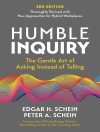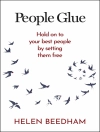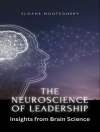The engineering industry underpins everything that we encounter daily and spans across a wide range of sectors including technology, manufacturing, construction, oil and gas, shipping, healthcare, renewable energy, and more. Yet despite its importance in our lives, fewer people than ever are studying in the fields of science, technology, engineering, and mathematics (STEM). The engineering profession not only suffers from a shortage of skilled and qualified workers but an ongoing mental health crisis, high rates of suicide, and stereotypical masculine norms that serve to create an unsafe, non-inclusive workplace. In short: in a world that is becoming more globalised every day, engineering is operating in an outdated mode and urgently needs an upgrade to meet the challenges of tomorrow and today.
In this insightful and sensitive book, safety engineer Mark Mc Bride-Wright explores how the principles and practices of diversity, equity, and inclusion (DEI) can close the engineering skills gap we face while creating a physically and psychologically safe workplace that fosters innovation and inclusive design. While acknowledging the challenges of achieving equity in the male-dominated fields of engineering and technology, why this matters for health and safety, and what it really takes to lead a cultural change, Mark provides a framework for implementing a holistic and robust DEI strategy that ultimately empowers and benefits everyone in your organisation.
Becoming a SAFE Leader will transform the way you lead in all areas of your life.
As an extension of Mark’s work as the founder of Equal Engineers, a firm committed to engineering inclusive cultures that attract, develop, and retain top talent, this book demonstrates that success in embedding DEI depends on strong leadership and comprehensive training, and that this approach leads to improved team dynamics, increased financial returns, higher productivity, and, crucially, safe teams.
Inhoudsopgave
About the Author
Testimonials
Glossary of Terms
Foreword
Mission Statement
Dedication
Acknowledgments
Content Warning
Preface-Guidance Notes
Introduction
Chapter One
Diversity, Equity, and Inclusion
Foundations and How This Links to Safety in Engineering
What Is Diversity, Equity, and Inclusion?
The Importance of Diversity, Equity, and Inclusion
Linking Health and Safety with Diversity, Equity, and Inclusion
Workplace Injuries
Key Takeaways
Chapter Two
How the Operating System was Built
The History of Physical Safety in Engineering
The Industrial Revolution, 1760-1800s
The Factory Act, 1802
The Introduction of Factory Inspectors, 1833
The Introduction of Duty of Care, 1832
Safety Regulations Increase, 1842-1878
The Employer’s Liability Act, 1880
A Continued Increase in Acts and Reforms, 1880-1970s
Occupational Safety and Health Act (United States), 1970
Health and Safety at Work Act, 1974
2010s and Beyond
Modern Physical Safety
Lost Time Incident Rates (LTIRs)
The Bradley Curve
Organisational Responsibility
Stop Work Authority Cards
Identifying the Difference Between Hazard Types
Key Takeaways
Chapter Three
SOS
The Failure of the Current Safety Operating System
Covid-19’s Impact on the Engineering Workforce
Case Study
Trusting Teams
Diversity Reboots Outdated Operating Systems
Inclusive Engineering Design
Key Takeaways
Chapter Four
Expanding the Operating System to Include Psychological Safety
Improving Mental Health and Well-Being and Reducing the Risk of Suicide Through DEI
Mental Health First-Aiders
Destigmatising the Discussion around Mental Ill-Health
Mental Health and Psychological Safety
Case Study
The SAFE Leader Model
Unconscious Bias
How DEI Tackles Unconscious Bias
The Importance of Equality for Psychological Safety
The Importance of DEI for Psychological Safety
Recommendations: How to Improve Mental Health in the Engineering Sector
Key Takeaways
Chapter Five
A New Inclusive Operating System: The Bradley Curve Revisited
1) Culture: Reactive-Motivation: Natural Instinct
2) Culture: Dependent-Motivation: Supervision
3) Culture: Independent-Motivation: Self
4) Culture: Interdependent-Motivation: Teams
Reactive vs. Interdependent Culture
The Bradley Curve and Psychological Safety
Case Study
Concept: Stage 5-Inclusive Interdependence
The Allyship Paradox
Key Takeaways
Chapter Six
How Diversity, Equity, and Inclusion, and Health & Safety Interlink to Create Psychological Safety
The Groupthink Paradox
Merging H&S and DEI
Psychological Safety Attracts Fresh Talent
Key Takeaways
Chapter Seven
Engaging the Majority: Masculinity in Engineering
Men’s Engagement
Men as Allies
How to Embed DEI in Male-Majority Teams and Save Lives
Inclusive Leadership
Self-Development
Recognising DEI is People-Led
Managing Diversity
Bystander Training
ALGEE Training
ASIST Training
Key Takeaways
Conclusion
The Future of Engineering: A System that Works for ALL!
Next Actions
References
Over de auteur
Dr. Mark Mc Bride-Wright MBE CEng MIChem E is an eminent leader in diversity, equity and inclusion (DEI) within the engineering sector, and has earned what he calls his ‘rainbow stripes’ for diversity in engineering after setting up Inter Engineering, the UK’s largest network for LGBTQ+ engineers in 2013. He won the coveted ‘Corporate Rising Star’ Award at the 2016 British LGBT Awards and was ranked number 2 in the Financial Times Future LGBT Lead Leaders list. He received an MBE in King Charles III’s Birthday Honours for his services and dedication to the field of engineering.After uncovering the high rates of suicide affecting engineers in 2018, Mark established research into Masculinity in Engineering to driving cultural transformation within organisations and founded Equal Engineers to bridge the gap between diverse talent and inclusive employers. Equal Engineers has since made great strides in educating thousands of engineers and leaders in fostering inclusive, safe workplace cultures for clients such as Airbus, Exxon Mobil, EDF Energy, and Mc Laren F1. Mark also travels internationally to provide consulting and training across Europe and the USA for clients in locations such as New Mexico, Colorado, Alabama, and California.












